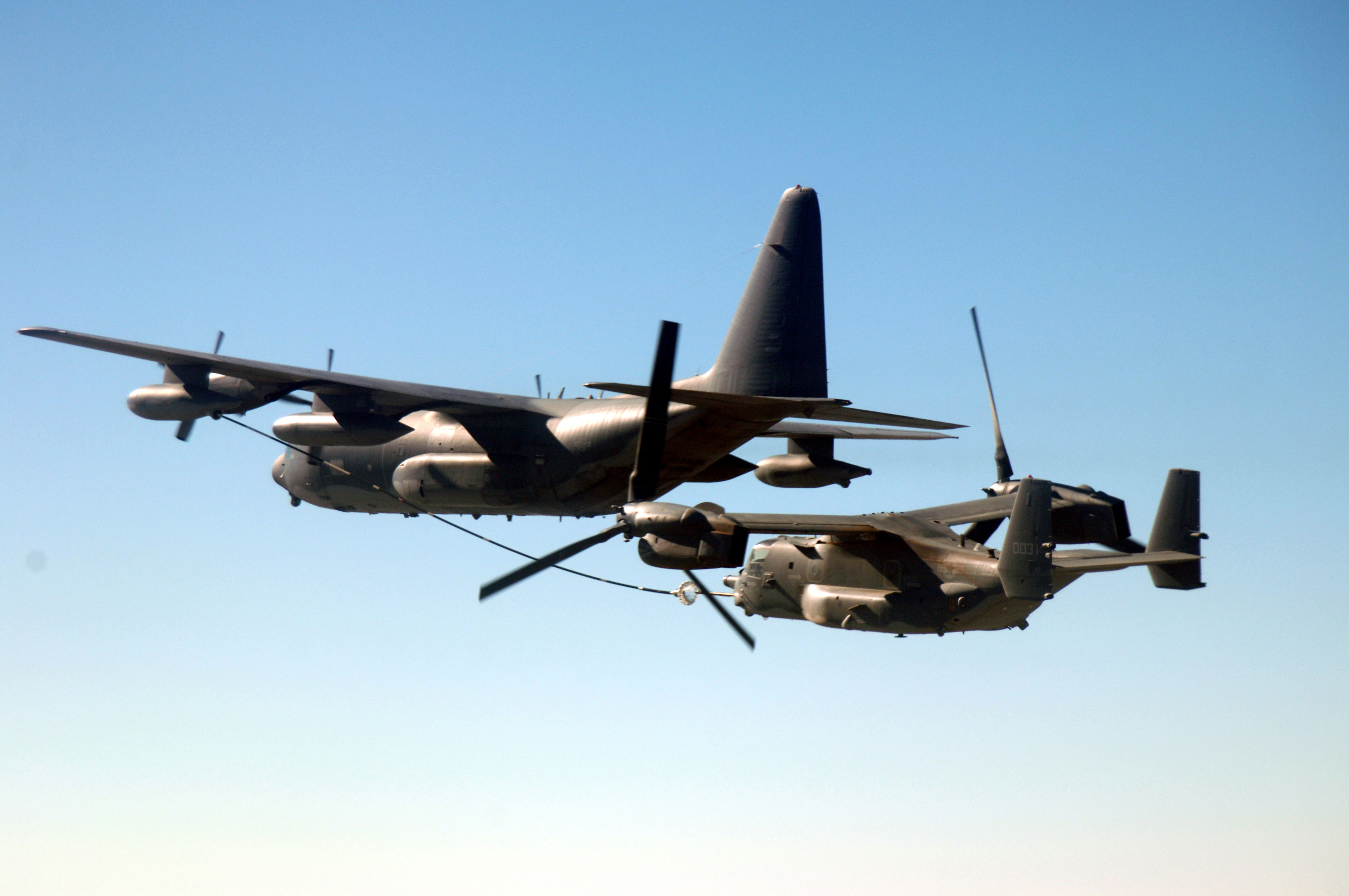C'est sûr que le souffle vers le bas est important (downwash) mais il ne touche pas seulement les moteurs, le sable/poussière rentre même dans le fuselage et pour diminuer le "brownout"équivalent sable du whiteout neige, le vol stationnaire se fait plus haut que d'habitude.
Quant à la furtivité, elle n'est pas améliorée (bruit et effet pyrophore) mais pas sûr que ce soit un objectif recherché.
http://www.globalsecurity.org/military/systems/aircraft/v-22-payload.htm
Following several earlier phases of operational testing, DOT&E raised concerns regarding the potential of the downwash created by the V-22 to interfere with needed operations below or close-by the aircraft; e.g., troop embarkations, hooking-up of external loads, and fastroping. Subsequent operational testing has shown that several of these operations can be safely conducted with the use of appropriate tactics; e.g., approaching the hovering aircraft from specific directions (and avoiding other directions) on the ground. Nonetheless, testing has demonstrated that some required capabilities (e.g., landing at night in desert environment) can be conducted only with great difficulty, some JORD-required capabilities (e.g., use of a rope ladder or three simultaneous fastropers) are unlikely to be achieved, and some planned capabilities have yet to be tested for downwash effects (e.g., personnel rescue from sea).Following several earlier phases of operational testing, DOT&E raised concerns regarding the potential of the downwash created by the V-22 to interfere with needed operations below or close-by the aircraft, e.g., troop embarkation, hookup of external loads, and fastroping. Subsequent operational testing has shown that several of these operations can be safely conducted with the use of appropriate tactics, e.g., approaching the hovering aircraft from specific directions (and avoiding other directions) on the ground. Nonetheless, testing has demonstrated that some required capabilities can be conducted only with great difficulty, some capabilities are unlikely to be achieved, and some planned capabilities have yet to be tested for downwash effects. a écrit:During OPEVAL, due to "brown-out" conditions produced by the downwash, experienced pilots found it very difficult to land in a desert environment at night while using night-vision devices (NVDs). In a desert environment, sand was ingested in the cockpit and cabin area, including the sub-flooring. While such ingestion is not uncommon with other assault support aircraft operating in a desert environment, of more concern is the number of failures caused by sand blown about by downwash. Failures of the engine air particle separators, shaft driven compressor, windscreen damage, full authority digital engine controls failures, overheating of the gearbox oil cooler, and hydraulic tubing chafing were attributed to the ingestion of sand and debris. The oil coolers in the nacelles became clogged and overheated the gearbox lubrication systems. Requirements to clean wing panels, wing coves, and wheel wells of sand and grass had an impact on unscheduled maintenance and aircraft post-flight inspection times. Downwash impacted all direct assault missions utilizing ropes. To reduce downwash, hover altitudes of 65-75 feet were maintained, thereby exposing both the aircraft and the ropers for longer periods of time. When conducting Maritime Interdiction Operations or Gas and Oil Platform Operations, operational judgment dictated the necessity for ropers once aboard the ship or platform to stay prone to reduce downwash concerns. Techniques for ropers would have to be developed to enhance their capability to fight once on the ship or platform. Direct action assaults are assessed as the operational scenario most in jeopardy.
Sur l'effet pyrophore (effet Kopp et Etchells) bien gênant pour les visées de l'ennemi...


https://sciencebasedlife.wordpress.com/2012/11/01/the-kopp-etchells-effect/
Pour le coût horaire, le choix entre
83.256 $ selon un document venant du GAO
et selon la source "global security"
By 2012 the plane’s operating cost was declining from rates as high as $12,000 per flight hour to an all-time low of $8,300. This was attributed the decline to a variety of factors, including more reliable parts and different flying protocols that cut down on maintenance needs. (source global security)












